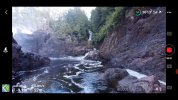Ken-Mav-Mtl
Well-Known Member
- Joined
- Jun 24, 2019
- Messages
- 222
- Reactions
- 200
I have frequently flown over water to capture video of friend who waterski. I began with the Mavic Pro and never had any issue with flying between 10 - 15 feet above the subject.
Mavic 2 Zoom performed just as well as the original Mavic Pro.
But when I began to use the Mini 2, I noticed a big change in how it performed, based upon the need to accelerate in Sport mode. Full power acceleration causes the drone to tilt forward to increase speed. This forward tilt results in minor drop in altitude which can be viewed on the OSD.
The Mini 2 however showed a much greater drop in altitude, to the point where I must start with an altitude of at least 20 feet to maintain a margin of safety not to drop down to the surface of the water.
Anyone care to comment on the reasons the Mini 2 appears to drop more than the MP or M2Z?
Mavic 2 Zoom performed just as well as the original Mavic Pro.
But when I began to use the Mini 2, I noticed a big change in how it performed, based upon the need to accelerate in Sport mode. Full power acceleration causes the drone to tilt forward to increase speed. This forward tilt results in minor drop in altitude which can be viewed on the OSD.
The Mini 2 however showed a much greater drop in altitude, to the point where I must start with an altitude of at least 20 feet to maintain a margin of safety not to drop down to the surface of the water.
Anyone care to comment on the reasons the Mini 2 appears to drop more than the MP or M2Z?




















